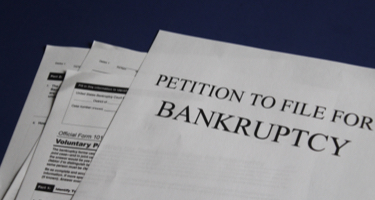Think about the start of a rollercoaster ride. You feel the coaster engage and it starts to move. It slowly climbs that first giant incline, and the anticipation builds for what comes next.
When you make the decision to file for bankruptcy protection, the moment before the schedules are submitted, and the direct aftermath, is a lot like the beginning of the rollercoaster ride. Immediately upon filing, an Automatic Stay is put in place. The Automatic Stay stops all collection efforts, which prevents most litigation from moving forward and gives you an opportunity to take a breath. But even with this relief, the coaster has begun to move.
341 Meeting
Regardless of the Chapter you file under, the next formal setting will be the 341 Meeting.
In the event of a Chapter 11 filing, this meeting will serve as a time to convene with the creditor body and the office of the United States Trustee (OUST). Not only will you discuss the events leading up to the filing, but you will also present a preliminary plan for reemergence or exit. Creditors are allowed to ask the debtor questions, and the OUST will endeavor to form a committee to represent the interests of the unsecured creditors.
In the event of a Chapter 7 filing, you will similarly meet with a trustee.
First Day Orders
Chapter 11 filings have a significant amount of activity immediately after filing. Known as the First Day Orders, everything from continuing payroll to payment of taxes, insurance, lease assumption or rejection, critical vendors, post-petition financing and the retention of professionals, amongst other things, are permissions that you, as Debtor in Possession, must obtain from the court. The Debtor in Possession remains in control of the business and business operations
contact a member of Withum’s Forensic and Valuation Services Group.
The use of cash collateral is also submitted as part of the First Day Orders, including a cash flow budget. Typically, a secured lender has a blanket lien on all assets of the business. To operate your business, you need to have access to what is now the secured lender’s cash in the bank account. Don’t expect the lender to agree quietly. They will want what is called Adequate Protection, meaning they want to have protection against further loss of the value of their collateral. Adequate Protection can take the form of cash payments, replacement liens, or as the best phrase in the bankruptcy code puts it, the “indubitable equivalent of the entity’s interest in such property.”
You will also submit the First Day Declaration. This will be an overview of the business, the issues that brought on the bankruptcy, description of the exit strategy and a cash flow budget, if not otherwise included.
We’re nearing the top of that first hill, in Part III we’ll talk about what happens in a Chapter 7 and Chapter 11 filing. Better check your seat harness, it’s about to be a wild ride.
Bankruptcy Process Part I: Planning for the Filing





